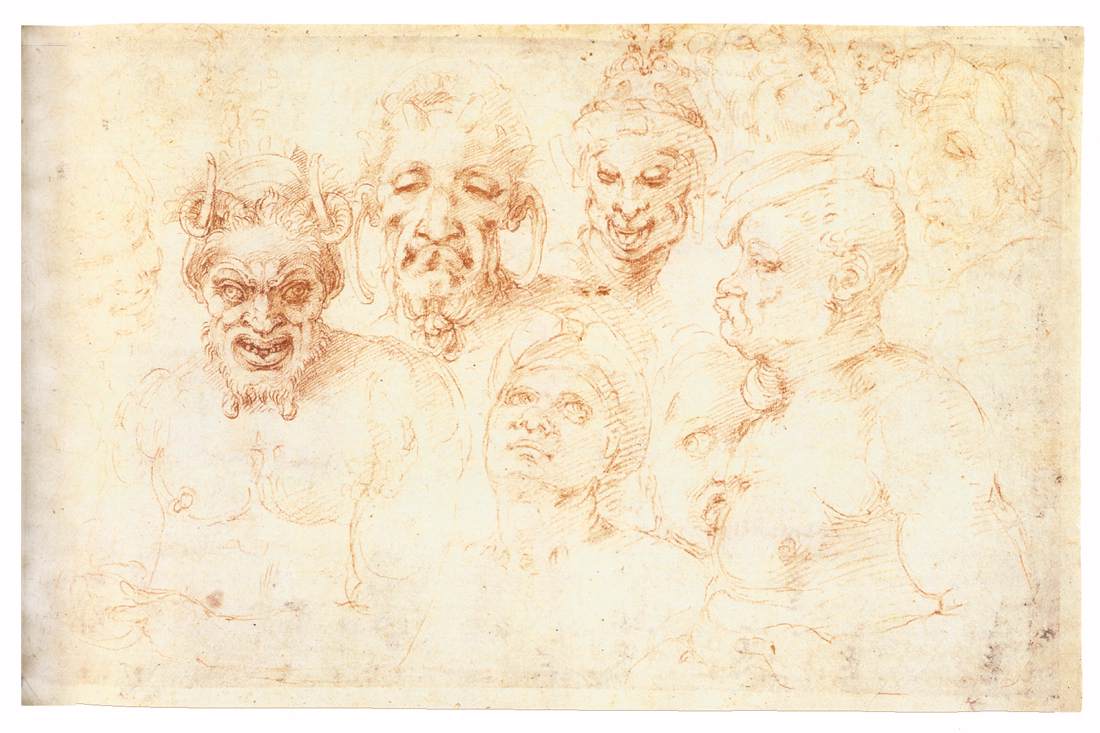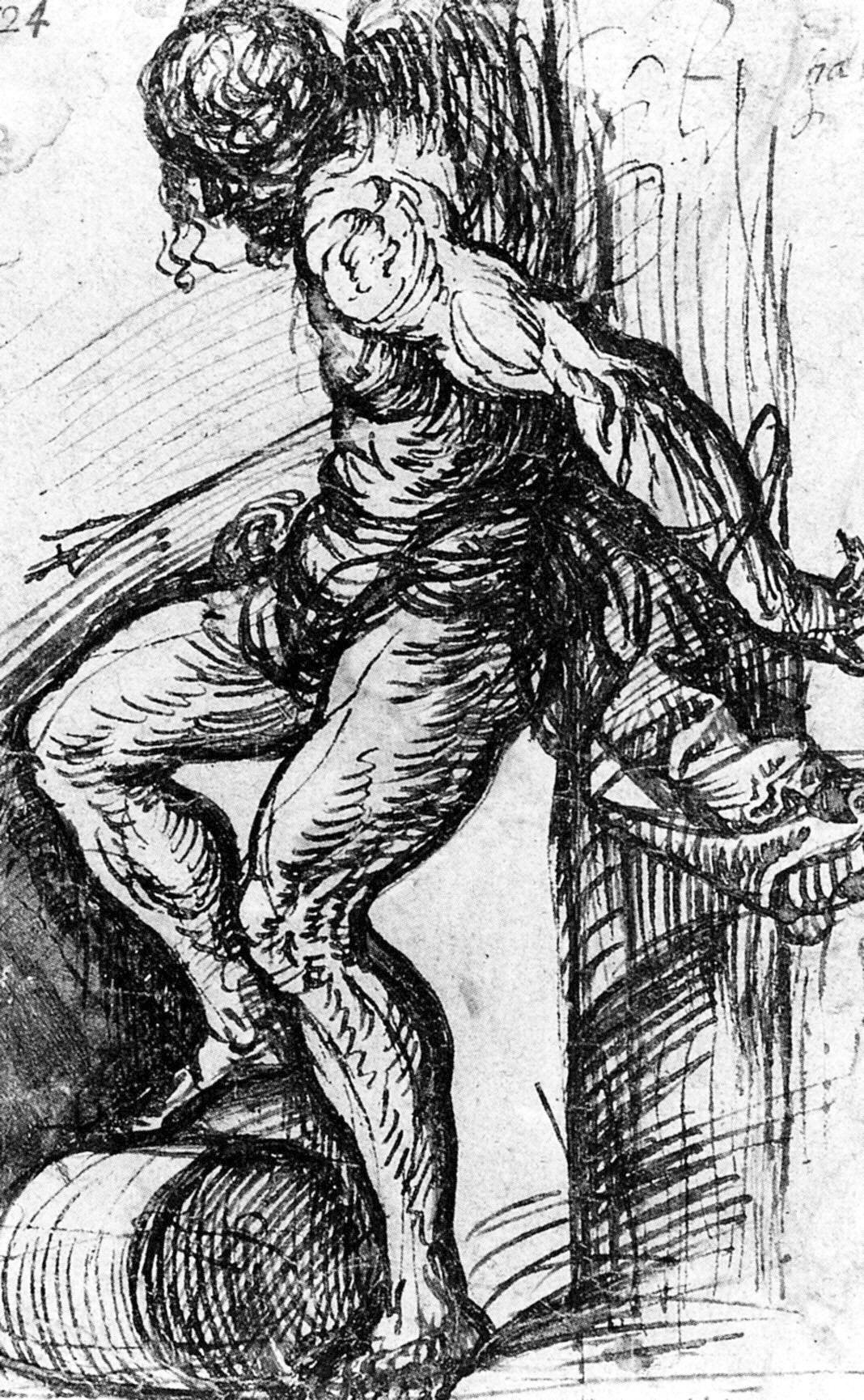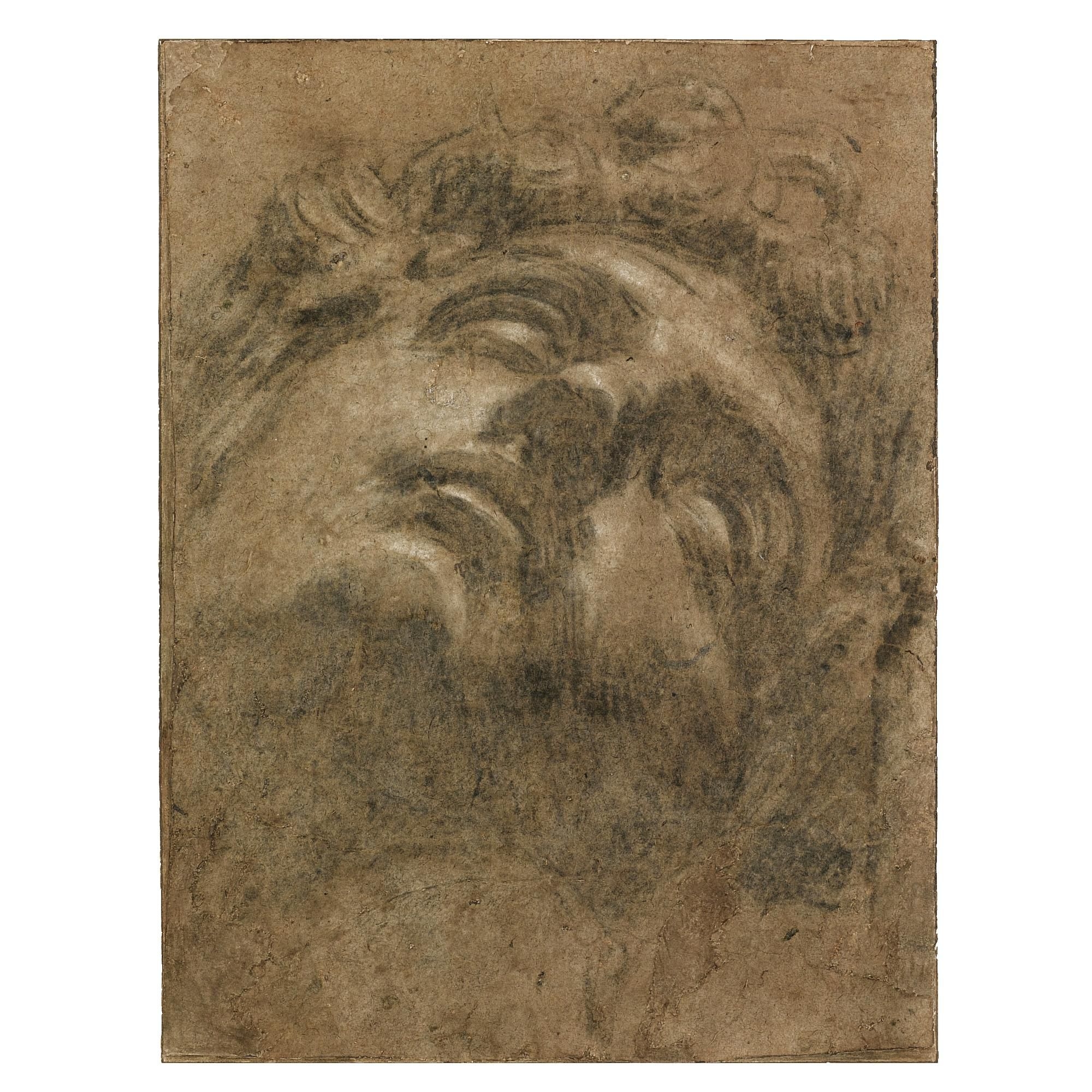The Städel Museum’s treasures comprise a comprehensive collection of
Italian Renaissance drawings. This collection includes prized sheets by such outstanding
artists as Michelangelo, Raphael, Correggio, or Titian, as well as drawings by
anonymous masters of the fifteenth century and less known artists of the
sixteenth century like Giulio Romano, Sebastiano del Piombo, or Taddeo Zuccari.
“Raphael to Titian. Italian Drawings from the Städel Museum”, on
show in the exhibition gallery of the Department of Prints and Drawings from 8
October 2014 to 11 January 2015, offers an exemplary selection of these
valuable holdings, most of which were part of Johann Friedrich Städel’s
foundation donation; in the mid-nineteenth century, these holdings were
extended by Johann David Passavant to form a collection of the first order.
The array of about ninety drawings visualizes the variety of an era
which – with the discovery of America, conflicting confessions, and a new
beginning in the natural sciences – was such a decisive period for Europe. The
presentation centers around High-Renaissance works of the early sixteenth
century as its art-historical pivot and not only ensures an experience of the
utmost perfection in drawing. It also illustrates the various artistic
movements of that epoch, the draftsmen’s working methods, and the functions of
drawings and sheds light on the history of collecting in the Städel.
The exhibition rounds off a long-term research project sponsored by
Stiftung Gabriele Busch-Hauck, Frankfurt. Drawing on recent research, the
Städel collections’ Italian Renaissance drawings up to 1600 were thoroughly
analyzed in the context of this project; more than a third of all exhibited
works, now featured in the catalogue of the collection published to accompany
the presentation, could be focused on for the first time.
“Embracing about a total of 450 works by Italian Renaissance
masters, our holdings rank among the most outstanding collections in Germany.
They inform the character of the institution they are connected with and
essentially contribute to the Städel Museum’s unmistakable identity. Striving
to keep this identity alive, the museum’s holdings have to be critically reassessed again
and again and continuously made the subject of scientific research. The show
‘Raphael to Titian’ is a both important and impressive visualization of this
core task of our museum, a task mostly pursued in obscurity,” Max Hollein,
Director of the Städel, points out.
“Drawings number among the most precious manifestations of artistic
creativity. Their unique appeal lies in their potential to make us relive the
masters’ considerations and often even their first artistic impulses. The
masterpieces assembled for this presentation offer incredibly intimate and
informative insights into the Italian High Renaissance – one of the most
significant and momentous epochs in art history,” curator Dr. Joachim Jacoby
describes one leitmotif of his exhibition.
The presentation in the exhibition gallery of the Department of
Prints and Drawings confronts visitors with a representative selection of
Italian drawings from between 1430 and 1600 that demonstrates the different
artistic movements of this world- renowned era, the various drawing techniques
and relevant functions, as well as specific aspects in the history of the Städel’s
collecting activities in a particularly vivid manner.
The show starts with a number of fifteenth-century drawings, not
many of which have survived. The range of the fifteen examples on display spans
from a drawing rendering four elegant Gothic standing figures from the circle
of Pisanello (c. 1430) and the impressive sketches depicting a mourning scene
by the Venice-based artist Marco Zoppo (c. 1470) to the drawing of a young man
looking upwards (c. 1500) by an unknown Venetian master.
The second section highlights the achievements of artists whose work
is regarded as belonging to the High Renaissance – a comparatively short period
of time between 1500 and 1525, in which the art of Europe took a completely new
direction and was already regarded as a phase of the “highest perfection”
providing the foundation for future generations by Giorgio Vasari in the
mid-sixteenth century. This epoch was decisively informed by the artists Fra
Bartolommeo and Michelangelo in Florence, Raphael in Rome, Correggio in Parma,
and Titian in Venice, all represented in the exhibition.
Here, visitors will come upon such superb and fragile masterpieces as
Michelangelo’s Grotesque Heads (c. 1525),
Raphael’s Design for the “Disputa” (c. 1508/09),
Correggio’s Seated prophet with book towards the right (c. 1523), and
Titian’s unique Study of St Sebastian for the high altarpiece in SS Nazaro e celso in Brescia (c. 1519/20).
Here, visitors will come upon such superb and fragile masterpieces as
Michelangelo’s Grotesque Heads (c. 1525),
Raphael’s Design for the “Disputa” (c. 1508/09),
Correggio’s Seated prophet with book towards the right (c. 1523), and
Titian’s unique Study of St Sebastian for the high altarpiece in SS Nazaro e celso in Brescia (c. 1519/20).
The further development until the end of the sixteenth century has
been divided into two sections: one includes works from central Italy, the
other works from the large area
between Genoa and Venice in the north of the country. The drawings of the first
group are arranged chronologically according to the centers Florence and Rome
and encompass works devoted to the demonstration of power and subjects of
courtly representation – like Bronzino’s sketch for a ceiling fresco in the
Palazzo Vecchio in Florence (c. 1539/40) (here is the finished work):
– and sheets used as essential instruments of planning or demonstrations such as those by Pontormo, Zuccari, or Poccetti.
– and sheets used as essential instruments of planning or demonstrations such as those by Pontormo, Zuccari, or Poccetti.
The selection of drawings from northern Italy is grouped after
geographical criteria, spanning from Liguria in the west to the Veneto in the
east. The art centers of northern Italy did not constitute a unity in
Renaissance times. The area was split up into different political territories
some of which brought forth their own stylistic forms.
This section includes
Venus Mourning the Death of Adonis (c. 1560) by Luca Cambiaso of Genoa,
the Adoration of the Magi (c. 1527/30) by the extremely influential Parmigianino of Parma,
and the Study of the head of Michelangelo’s “Giuliano de’Medici” (c. 1545/60?) executed by the Venice-based Tintoretto presumably after a cast of the sculpture in the Medici Chapel in Florence.
This section includes
Venus Mourning the Death of Adonis (c. 1560) by Luca Cambiaso of Genoa,
the Adoration of the Magi (c. 1527/30) by the extremely influential Parmigianino of Parma,
and the Study of the head of Michelangelo’s “Giuliano de’Medici” (c. 1545/60?) executed by the Venice-based Tintoretto presumably after a cast of the sculpture in the Medici Chapel in Florence.
All in all, the exhibition not only conveys a wide-ranging survey of
the various movements and regional variants of Italian Renaissance art. It also
fathoms the numerous functions and techniques of the medium by means of sheets
like the chalk drawing Three Figures from the “School of Athens” (Stanza
della Segnatura)
(c. 1510/12) made by Raphael and his workshop, a silverpoint study
of a live model for a crucified figure from the fifteenth century, Jacopo
Bassano’s Study of a Reclining Figure (c. 1567?) executed in differently
colored chalks, which strikes us as nearly abstract, or Giuseppe Cesari’s
black-pen depiction of a Narcissus
(c. 1595/1600), an independent work standing for itself.
The Städel’s collection boasted significant holdings of old-master
drawings even in the days of the foundation donation for the Städelsche
Kunstinstitut in 1815. These holdings were decisively extended and
distinctively structured by Johann David Passavant (1787–1861) around the
middle of the nineteenth century. Passavant, who was responsible for the Städel
Museum’s collections as their “Inspektor” (curator) from 1840 until his death
in 1861, pursued a strategy of deliberately acquiring “only outstanding” (as he
said) individual works in order to provide visitors of the museum with a
striking impression of the history of art and an intense experience of the art
of “all times and schools.” Passavant had begun his career as a Nazarene
painter and, based on his fascination for Raphael and Dürer, acquired a
profound expertise in Italian and German Renaissance art. Consequently, the
collection of drawings developed a number of focal points which are still quite
evident in the institute’s holdings today. The Städel’s treasure of Italian
Renaissance drawings highlighted by the presentation ranks – not least thanks
to a number of later additions – among the most important European collections in this
field, and no other German collection is in the possession of more drawings by
Raphael.
The exhibition will be accompanied by a comprehensive catalogue
written by Joachim Jacoby and published by Michael Imhof Verlag. Its texts
thoroughly document each drawing (technical data, watermarks – if there are
any, provenance, literature), exploring it in detail and relating it to the
respective artist’s oeuvre. The catalogue contains illustrations of all
drawings (recto and verso plus watermarks, if necessary) and, including reproductions
of numerous reference works for comparison (drawings, paintings, prints),
ensures a high degree of visual understanding.
Following the presentation in the Städel, the exhibition will be
shown in the Fondation Custodia, Collection Frits Lugt in Paris from 21 March
to 21 June 2015.
Catalogue: The exhibition
will be accompanied by a comprehensive catalogue written by Joachim Jacoby and
edited Dr. Jutta Schütt, Dr. Martin Sonnabend, and Max Hollein to be published
by Michael Imhof Verlag. German, c. 300 pages, 34,90 euros.






